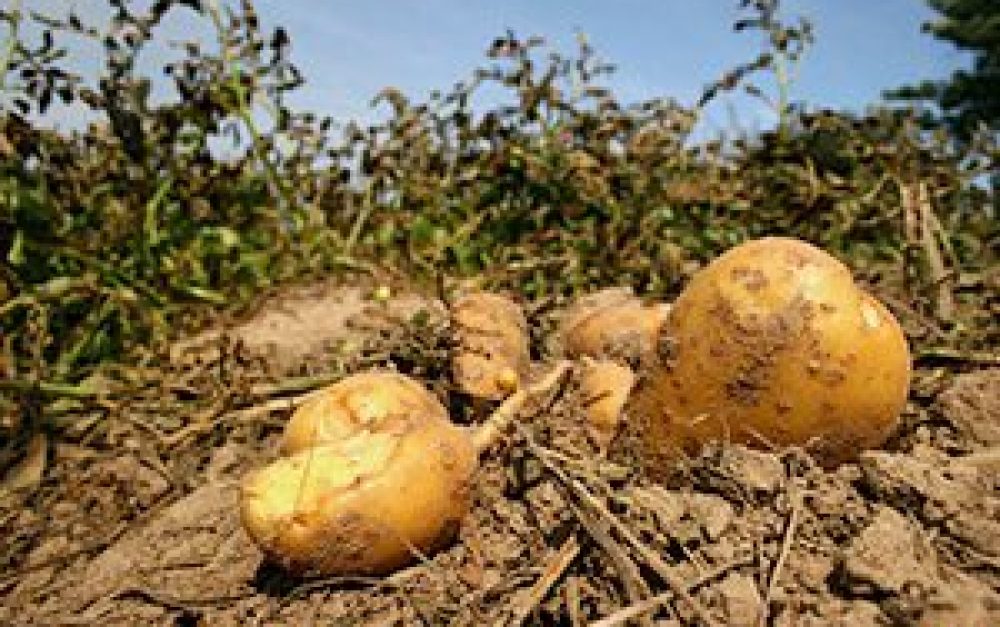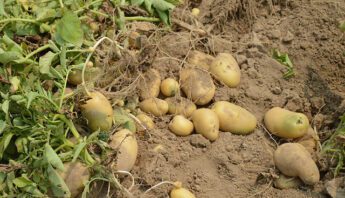Minnesotans who live in potato country have been worried about pesticide drift for a long time. And the Minnesota Department of Agriculture (MDA) is finally taking some steps to address the problem.
The agency is taking a closer look at the voluntary Best Management Practices they promote to potato farmers to minimize fungicide drift. And answering the call for public input, nearly 1,000 Minnesotans submitted comments last week, voicing their concerns about fungicides and the risks they post for human health, the toll they take on ecosystems, and their costs to the livelihood of small farmers.
Why the focus on potato fungicides? Central and Northern Minnesota are home to more than 50,000 acres of potato fields. Most of these acres are owned or leased by one large company: RDO — short for Ron D. Offutt, the company’s CEO and founder. In fact, RDO is the largest potato producer in the U.S.
At the height of the growing season, RDO potato fields are sprayed with fungicides as often as every five days. Combined with gusty winds and balmy summer temperatures, frequent fungicide applications almost guarantee that these chemicals don’t stay where they’re put. They may drift during application, or vaporize from the surface of the plants or soil and migrate — a process called volatilization.
Community science in action
Frustrated with current policy, Minnesotans concerned about drifting potato fungicides started documenting the problem. After being trained by PAN staff, community members used Drift Catchers to test their air for pesticides from nearby potato fields.
Their findings? Sixty-six percent (66%) of the air samples taken in Central Minnesota tested positive for pesticides, including 64% containing the fungicide chlorothalonil. Chlorothalonil is both drift-prone and harmful to health; EPA classifies it as a likely carcinogen, and it’s highly toxic when inhaled.
Members of the community presented their findings to MDA, who took the data to heart. And when the agency announced its public comment period, it referenced this Drift Catcher data as evidence that new BMP’s are needed.
Headed in the right direction, but…
Best Management Practices (BMPs) are resources for farmers, they're recommended practices that growers can adopt if they choose. And while voluntary measures are a good place to start, stronger policies are needed for small farmers who have lost their livestock due to fungicide drift or Native communities working to preserve traditional foods.
Carol Ashley, a resident of Park Rapids, MN, said:
"It's wonderful that the MDA is taking notice that there's something wrong. But I'm cautious. I don't have very much confidence that anything voluntary is likely to be effective given that RDO and the Department of Agriculture have known about this problem for years. I continue to be very concerned about people who live close to these fields, and the environmental damage the potato production has caused."
We know that the best way to reduce drift is to reduce pesticide use, and there are viable alternatives to fungicides like chlorothalonil. Indeed, sustainable potato farmers across the country use innovative methods to stem potato diseases without chemical fungicides. Longer crop rotations help reduce disease and build healthy soil. Planting multiple potato varieties improves crop resilience, especially when more resistant varieties are part of the mix. Healthy seed and well-sanitized farm equipment eliminate opportunities for disease to spread. Biological controls can induce disease resistance with less risk than chemicals.
True to integrated pest management approaches, chemicals should be a last resort — not a weekly habit. It's time for new rules to better protect Minnesota communities.







